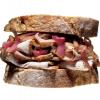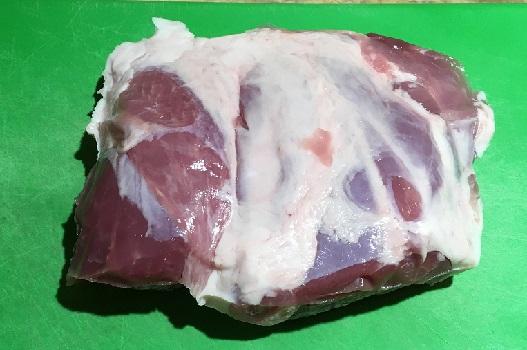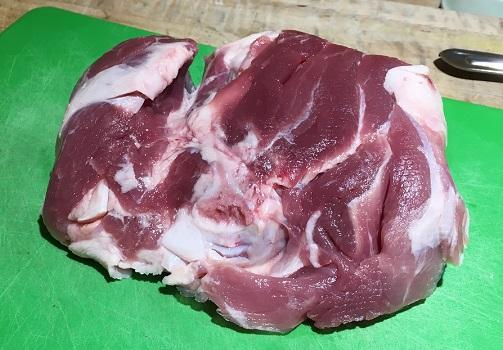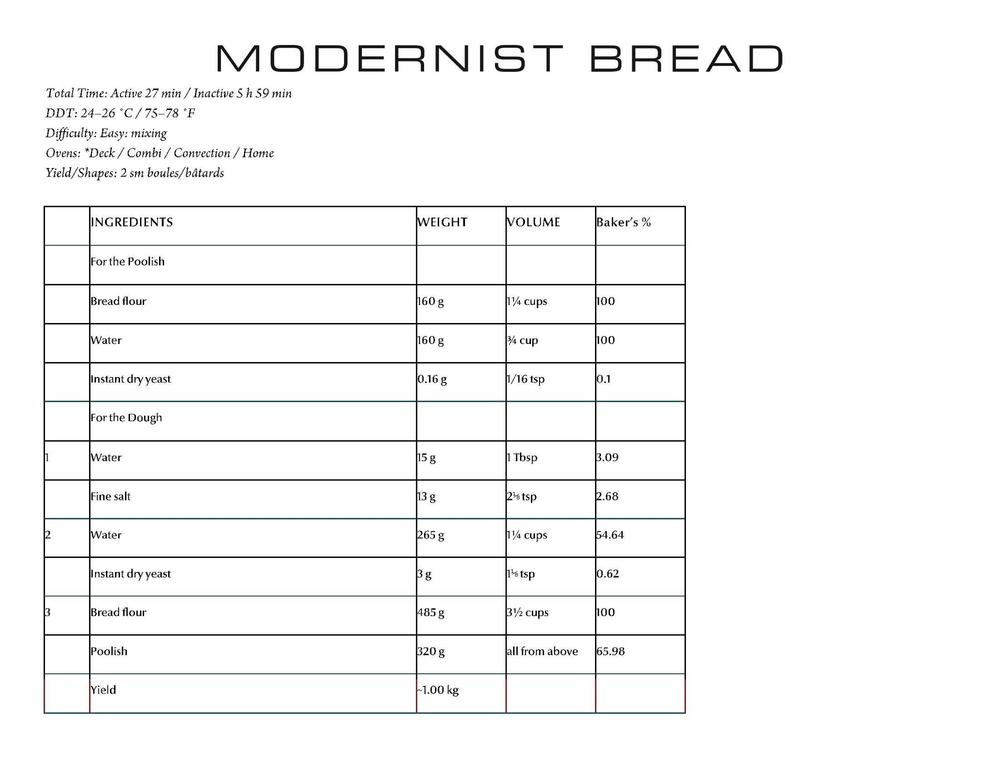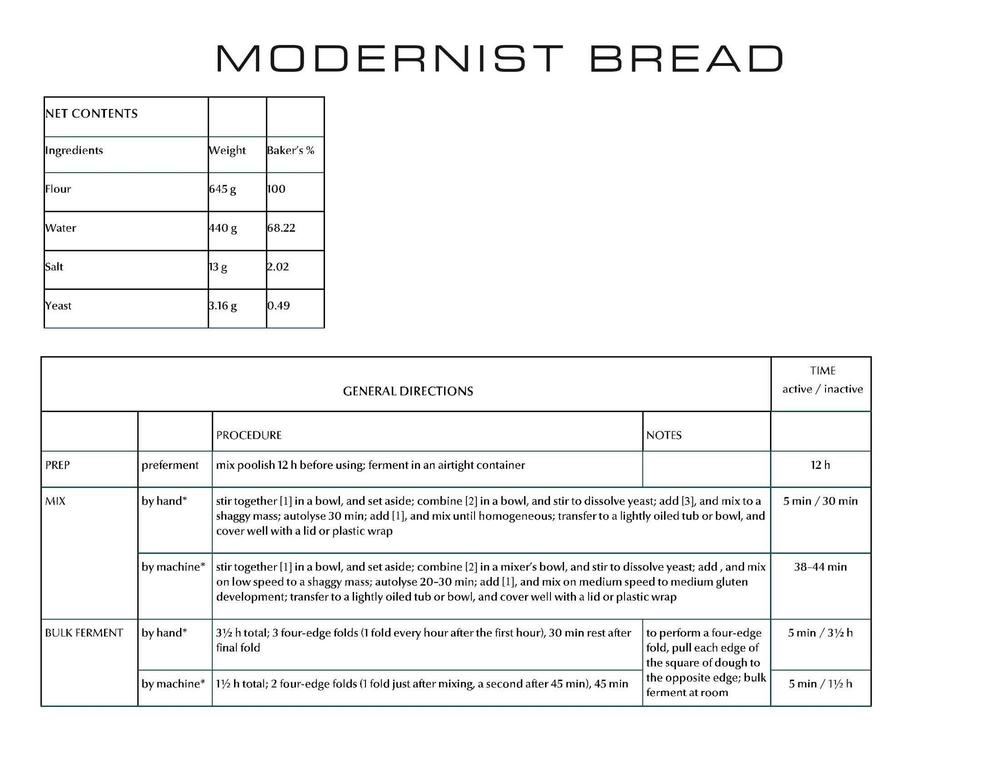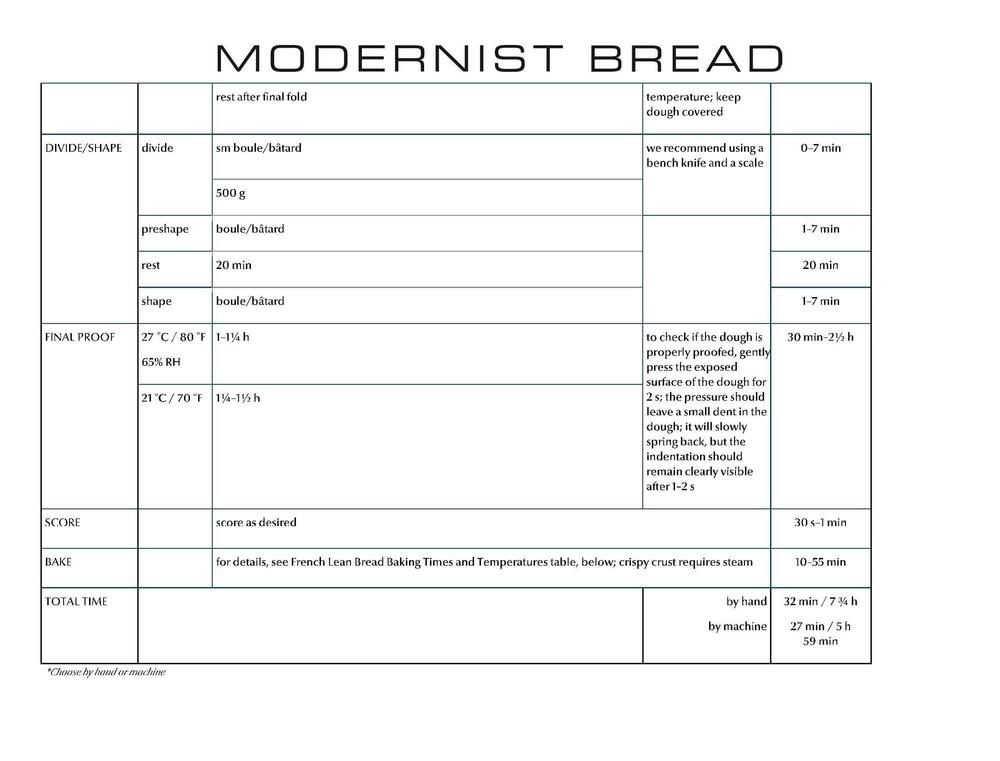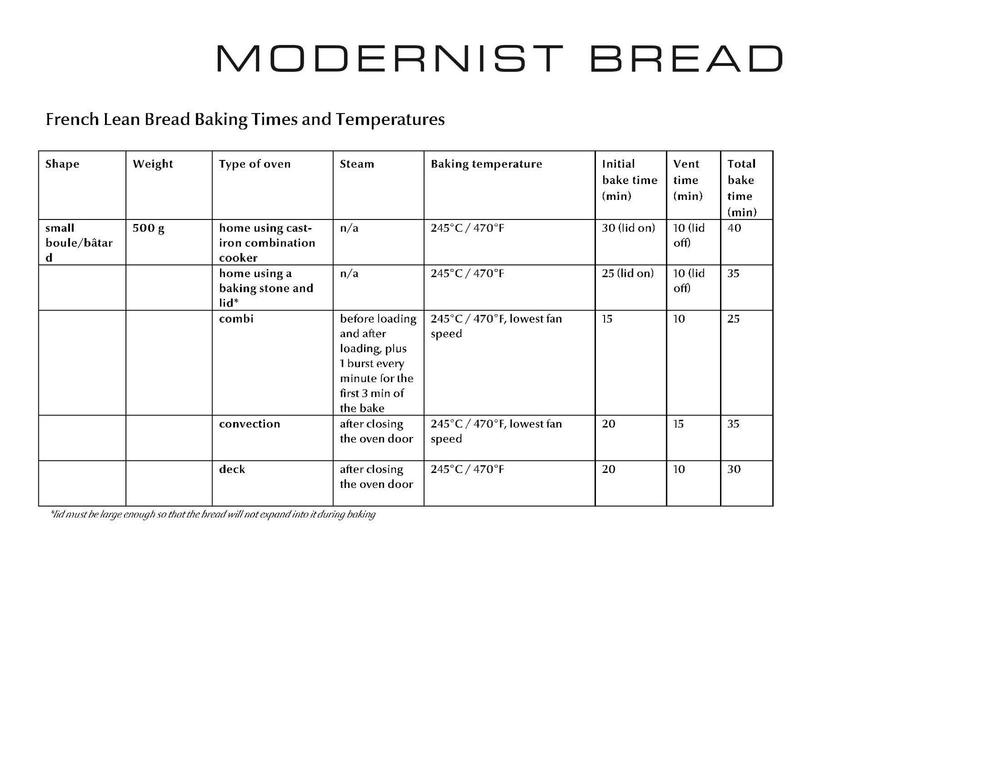Search the Community
Showing results for tags 'Modernist'.
-
I want to make mint spheres for use in a hot sauce. (Think lamb with mint caviar.) Can this be done? Is it possible to make heat-stable spheres? What is the most effective way to extract mint flavour from the raw leaves? I don't want the resulting spheres to contain alcohol as it will be served to children. My cursory investigations indicate that glycerol may be an alternative—has anyone done this?
-
I'd like help from anyone on making the best Pistachio Ice cream. This forum is a continuation of a conversation I started in my "introduction" post, which you can see at I recently made Pistachio ice cream using the Jeni's Ice Cream Cookbook. I love Pistachio ice cream, so I've launched an experiment to find the best recipe. I am going to try two basic approaches: The Modernist Cookbook gelato, which uses no cream at all, and ice cream; I'm also experimenting with two brands of pistachio paste and starting with pistachios and no paste. Lisa Shock and other People who commented on the earlier thread said that the key is to start with the best Pistachio Paste. Any advice is appreciated. Here is where I am now: I purchased a brand of pistachio paste through nuts.com named "Love 'n Bake." When it arrived, it was 1/2 pistachios and 1/2 sugar and olive oil. I purchased a second batch through Amazon from FiddleyFarms; it is 100% pistachios. I bought raw pistachios through nuts.com. The only raw ones were from California. If anyone has advice on using the MC recipe or on best approaches to ice cream with this ingredient I'd appreciate them. I will report progress on my experiment in this forum.
-
I am planning on making Michael Ruhlman's macaroni and cheese this weekend for a party. In the recipe, you make a soubise sauce with flour, butter, milk, and carmelized onions. You hand blend these all together (with some spices), and then add the grated cheese to the hot liquid to melt. Then you can mix in with the cooked pasta and keep overnight in the fridge. Then I remembered I have sodium citrate in the pantry. We like this recipe, but find that it's not as "cheesy" or "creamy" as we'd like it to be sometimes, especially after cooking. Would adding a dash of sodium citrate to the cheese/soubise mixture help keep it that classic cheesy texture? Even if it sat overnight in the fridge and was then baked? As I am making this along with smoking a couple pork butts for my girlfriend's co-workers, I really don't want to have a food disaster! Thanks all, Mork
-
I recently did some halibut steaks sous vide. They were about 1 1/2 inches thick. I did them for 30 minutes at 122 degrees. When i took them out to brown them, they were very fragile. As I browned them they fell apart. They were delicious, perfectly cooked from an eating point of view, but ugly. Too hot, too long or both?
-
One question: Do you guys use the bag juice to make sauce after cooking meat sous vide? I'm currently doing a 72h short rib and there is quite a bit of juice accumulating in the bag.
-
I felt there should be a proper home for methode rotuts sparkling wine, perhaps sparkling cider. (Maybe not sparkling gin just yet, though that is a thought.) Which wines work best? Which mixtures of gasses? Has anyone tried nitrogen? How about red wine or rose? So far all my experiments have been with soave though I have some chardonnay to try. One advantage of methode rotuts is that stainless steel pressure vessels are much less likely to break falling out of the refrigerator than typical glass bottles. They may, of course, explode. This is yet to be tested.
-
I'm still confused how long to hold the temp to pasteurize chicken. According to Modern Cuisine's Extended and Simplified Table, once the core reaches 150F, it only takes only 1 min 10 seconds, to pasteurize. Is this good enough to eat safely? What about pasteurizing for Listeria? At 140F the table saids it only takes 11 min. 34 seconds to pasteurize. When I read the recipe from MC at Home, it saids, at 140F, to hold for 20 minutes to pasteurize chicken. The original Modernist Cuisine table saids only 11 min 34 seconds. Which one is correct? I want to make sure I'm eating my chicken breasts safely! Thanks!
-
I made a 5lb rotisserie pork shoulder roast last night and it reached 145F pretty quick (like 1 1/2 hours) I decided to throw it in the sous vide @ 145F overnight. I have done smoker/oven + sous vide before with good results but both methods were always low and slow. This would be the first time i brought something to target temp very quickly then let it continue at a much slower rate. I am wondering if this extra time will continue to tenderize or not? I brined the roast for 36 hours and very little juices were left in the rotisserie pan so i dont think it will end up dry. Thoughts?
-
Hey all, I've made thicker and creamier sorbets with 25% to 35% sugar strained fruit purees and sugar, syrups, and other stabilizers that have worked well. However, because it's so much fruit and little to no water it can be an expensive project. I am trying to make "Water Ice" or "Italian Ice" in my home ice cream machine. Think of textures similar to Rita's Water Ice, Court Pastry Shop, or Miko's in Chicago. It eats much lighter than a sorbet but isn't really icy, but it's also not thick like sorbet. Ritas uses "flavoring" and sugar, while the other two use fruit juice. I'm thinking of thinning the strained fruit juice with water and adding a stabilizer, but I'm having trouble getting this in my home ice cream machine without it freezing solid like granita. Can anyone suggest a way to use real fruit juice, water, and a combination and concentration of stabilizers to get a looser, frozen fruit dessert that isn't icy?
-
This year i decided to take a 22lb turkey and remove the Leg quarters and sous vide @165F for 6 hours. I also removed the turkey crown and sous vide it @ 150F for 4 hours. Both were immediately ice chilled and put into the fridge. The plan is to reheat back in the sous vide @ 135F and right before serving time, deep fry in the turkey fryer for a few minutes to crisp up the skins. I just am just not sure the time needed to bring this pretty large whole deboned (3-4 inch at the thickest spot) turkey breast up to temp. The leg portion is about the same thickness maybe slightly thinner. Given there is 4 hours till serving time, I am wondering what effect 135F would have if left in for 4 hours? I am looking for traditional textures. Relatives will not eat if any hint of pink. Anyway, 1,2,3,4 hours @ 135F from 38F already pre cooked. 3-4 inches thick. thanks
-
I usually cook topside beef joints at about 55 degrees for 6 hours, and that gives me a nice even pink and tasty joint. I'm quite interested in trying a very slow cook, like 24 hours maybe, but researching this online, the resulting guidelines just seem to recommend these long cooking times for tougher cuts of meat. Has anyone tried this long a cook on a low heat with joints like topside? Are there any online recommendations for this kind of thing? Thank you kindly
-
I've just cooked two lamb shanks sous vide for 72 hours at 141F in separate bags. When I opened the first bag, the shank looked and smelled great. The second bag, however, smelled bad (to me). The shank was covered in gelatinous red stuff. My husband is less smell-impaired than I, so he ate that one. The two shanks were purchased from the meat market associated with the Department of Animal Sciences at the local university where the students will have butchered the animals. I'm wondering if what's possible is that one of the shanks did not have all the blood drained out. And that the smell which I've associated with "bad" is actually the smell of blood.
-
HI guys, I'm here for a bit of advice. We are building a house (in Croatia, Europe), and finally have a chance to build a kitchen as i want it We would like to get a professional combi oven, something like this new Rational (a bit pricey) or this UNOX (better price) so that we have a long term solution for our needs. The reason we are going for the professional oven is that, for example UNOX, is cheaper than "home combi ovens" from brands like Miele, Gaggenau, etc. and are much better than those. Does anyone have any experience with pro combis at home? i have only seen a couple of people, at least on the internet, that have them at home. I guess that setup would not be a problem, because we designed a water inlet and outlet for the oven, and the voltage is OK. is there anything we didnt think of? Will that oven have higher maintananace cost, even if its used only couple of days a week? Thanks for help P
-
Hello, This is my first post here -- apologies if I'm making any mistakes on protocol -- I have spent some time checking prior posts but this seemed the best place to jump in. I have a 13lb skin-on, loin attached pork belly I'm going to cook for Christmas dinner. Coincidentally I also have an Anova sous vide circulation heater and a new plastic tub with a lid. The recipes I've saw mostly call for seasoning, a water bath for 36 hours and then a deep or pan fry to crisp. Now I have the setup, and look at the combination of the roast and the container I realize I have some questions about what I'm doing -- I've attached a picture below of what we're starting off with. Here are those questions: The fit seems a little tight to me -- is the container size fine? I was planning on seasoning, tying and double bagging it in large ziploc bringing bags ( water displacement, no vacuum sealer ). I've convinced myself the ziplock method is fine, but is standing the meat vertically in a space close to it's dimension for a 36 hour cook ok? After the 36 hours in water, it is Ok to refrigerate? The main recipe I've been using as a base calls for removing it, shocking it and then removing the liquids for sauce before deep frying -- would it be ok to shock, refrigerate for several hours, then bring to temperature in the bath again before proceeding with browning/bringing to temp? If this isn't a bad idea, how long would you keep in the water bath after refrigeration? Deep frying vs. a quick hot oven? I'll rub baking soda on this, and I'll fry if need be -- but does anyone have experience or thoughts on whether you'd be defeating the purpose of using sous vide in the first place if you just used a suitably hot oven to crisp the skin after cooking sous vide and drying the skin beforehand? I'd prefer not to to do an inside stove top fry for something this large right before dinner if it wasn't sacrificing too much. Thanks for any help, would also be great to hear any other useful advice from anyone that's went through a similar process. Gary
-
When do you start counting the time in sous vide cooking? - when you first put the plastic bag into the heated water? Or, - when the heated water comes back to the desired temperature? I have a 7 quart slow cooker with an Auber instruments controller. There is nothing to circulate the water, but it has never proved to be a problem for me before. Sous vide fish is a new activity for me. After much research I planned 119F for 20 minutes, though in future I'll try one degree lower each time. My first experiment was salmon tail and it was the most delightful salmon I have ever eaten. Water heated to 119F. Added marinaded fish in a ziplock-type bag which had been removed from the fridge not long before, and I used the sous vide water to push the air out of the ziplock bag. Temp dropped enormously (but I don't recall exactly) and it took 15-20 minutes to get back up to 119F. Then I cooked for 20 further minutes. Second experiment was salmon tail and it was as boring as I usually find salmon. I took the marinaded fish out of the fridge 1 hour or 1 1/2 hour before it went into the sous vide pot. I used lukewarm water in bowl in sink to remove air from ziplock. When the fish was dropped in, the temp dropped to 113F. I was not as anxious watching the temp rise this time, so I didn't check it every few minutes. Somehow the water got up to 124F. In both these cases I used a soup bowl in the sous vide pot to hold the fish under water. So, short of buying some new sous vide equipment, could you advise me about things I could do to minimize the temperature drop and maximize my control over the fish.
-
On Nov. 7, 2017, Modernist Bread will finally arrive on my doorstep. Having preordered it literally the first day it was available, to say I'm excited about this book is a bit of an understatement. The team at The Cooking Lab have been gracious enough to give @Dave the Cook and me early electronic access to the book and so I've spent the last week pouring over it. I'm just going to start with a few initial comments here (it's 2600 pages long, so a full review is going to take some time, and require a bunch of baking!). Dave and I would also be happy to answer any questions you've got. One of the main things I've noticed about this book is a change in tone from the original Modernist Cuisine. It comes across as less "everything you know is wrong" and more "eighty bazillion other bakers have contributed to this knowledge and here's our synthesis of it." I don't think it's an exaggeration to say that Myhrvold and company are now the most experienced bread-bakers in the world. Not necessarily in terms of the number of identical loaves they've produced, but in the shear number of different recipes and techniques they've tried and the care with which they've analyzed the results. These volumes are a distillation of 100,000 years of human breadmaking experience, topped off with a dose of the Modernist ethos of taking what we know to the next level. The recipes include weight, volume, and baker's percentages, and almost all of them can be made by both a home baker and someone baking in a commercial facility. The home baker might need to compromise on shape (e.g. you can't fit a full-length baguette in most home ovens) but the book provides clear instructions for both the amateur and professional. The recipes are almost entirely concentrated in volumes 4 and 5, with very few in the other volumes (in contrast to Modernist Cuisine, where there were many recipes scattered throughout). I can't wait for the physical volumes to arrive so that I can have multiple volumes open at once, the recipes cross-reference techniques taught earlier quite frequently.
- 171 replies
-
- 11
-

-
Wikipedia defines pork wings as: a pork product made from the fibula of a pig's shank - a single bone surrounded by lean, tender meat. Images from the internet look like a finger-size bit of meat around a bone. Mine, however, look more like the meat (lots) which surrounds a bone. My butcher called this cut pork wings. You can see on the right that there's a small amount of bone. My butcher said he regularly ate SEVERAL of these. But this one measures 15 oz (425g). He also said it had to be cooked slowly. So, if I cook these sous vide, what temp and for how long?
-
Is it possible to put a rub on a sous vide item? I'm cooking pig wings here and I'm trying to figure how to finish them. This looks good but would require a rub.
-
Does anyone have reliable tricks for getting good flavor out of garlic in a sous-vide bag? I'm talking about using it just as an aromatic, while cooking proteins, or as part of a stock or vegetable puree. The one time I forgot the maxim to leave raw garlic out of the bag, I ended up with celeriac puree that tasted like a tire fire. I see some recommendations to just use less, but in my experience the problem wasn't just too much garlic flavor. It was acrid, inedible flavor. Using less works fine for me with other mirepoix veggies. I also see recipes for s.v. garlic confit (listed by both Anova and Nomiku) and for some reason people say these taste good. How can this be? There was a thread questioning the old saw about blanching garlic multiple times in milk, which didn't come to any hard conclusions. I'm wondering if a quick blanch in water before adding to the s.v. bag, to deactivate the enzymes, would do the trick. But I don't know the actual chemistry behind the garlic tire fire, so am not confident this would work. Some cooks advocate garlic powder; I'm hoping to not resort to that. Thoughts?
-
Recently cooked whole bone-in lamb shoulder sous vide for 8 hours @ 80°C. The results were like a typical braise. More interestingly, I weighed the different components after cooking for future reference. Here is the breakdown: Before cooking: 2.1 kg lamb shoulder – whole, bone-in, untrimmed After cooking: 621 g liquid 435 g bones and fat 1044 g meat Almost precisely half of the total weight was meat. Hopefully this will be helpful if you are trying to calculate portions. As an aside to this: we've been cooking our tough cuts (sous vide) whole, without any trimming at all, and removing fat and bones after cooking. It is so much easier and faster than trimming everything beforehand. The excess fat comes off in large pieces and connective tissue peels away cleanly. Lamb shanks, for instance, are tedious to trim before cooking but easily cleaned up after they come out of the bag. It's luxurious to have big, clean pieces of shank meat although some may prefer on-the-bone presentation. We have tried this with pork shoulder, too, and the unwanted fat is easily removed after cooking with lovely hunks of tender meat remaining for slicing, dicing or shredding.
-
Good morning! Long story short: I am doing a spin off the coconut/chocolate/almond candy (almond joy), and trying to create a specific shape out of the almond. My hands are cramped after a couple dozen failed attempts whittling roasted almonds, so now I'd like to try a different approach, and instead, create some kind of sub-candy or cookie with roasted almonds that I can put into a mold or use a mini cookie cutter. I'm fairly new to sweets, my knowledge in this area is pretty slim. Some ideas so far, I don't like any, but it might help turn some gears: 1. dusting almond over a stencil, but that's not enough almond nor crunchy enough 2. almond brittle, but that's too hard and sweet, I'd like it more of a soft crunch, and bringing the almond flavor forward 3. meringue with almonds (sort of macaron-ish), however, weather has been humid and raining here, and I'm ending up with a gooey mess instead of that soft crunch In addition to having almond-forward taste and soft crunch texture, it'd be fun to explore something modernish - I have a accumulated a few tools and ingredients not customarily found in homes. There are dietary considerations I will have to account for, however, no need to worry about that now, I am just looking for ideas and a place to take it from there Thank you for your time in reading!
- 16 replies
-
- Chocolate
- Confections
-
(and 1 more)
Tagged with:
-
FOOD BRETHREN! I need some advice. I have one last piece of pork belly confit in the fridge. I brined these bad boys for about 5 days (brine included pink curing salt), vacuum sealed the squares of pork belly with lard and sous vide them at 158 F for 16 hours. I cooked this on 11/10/16 and its been in my refrigerator since. Here is the general recipe I followed, with some modifications based on my taste: https://www.chefsteps.com/activities/... The last piece is still vacuum sealed and submerged (mostly) in lard. Any visible pork only has contact with the bag. It's staring at me. And calling my name. I want to deep fry this sucker and have a little date night with the handsome devil I see in the mirror every morning, but the last thing I want is spoiled food. I can't find any conclusive information about how long pork confit lasts for. I've only seen references that duck confit or in general that the confit technique will last for months in the fridge. I have found no sources which directly addresses pork confit. Questions/Factors I'm Considering: - Does pork confit keep for as long as duck confit? - Does vacuum sealing have any effect on the length of preservation? - Does sous-vide cooking method affect the length of preservation? I know I am probably being a bit paranoid, but I thought I would do my due diligence before taking the plunge, so to speak. Any advice on these questions would be extremely helpful and appreciated! The Franzisaurus-Rex PS - you should totally make this if you are into sous vide, confit, food, or have any respect for the enjoyment of life. Flash-searing these things after cooking was OUT OF THIS WORLD.
-
The NY Times has a current article in the science section "A Universe of Bubbles in Every Champagne Bottle". The article asserts that it is better to serve Champagne at warmer than refrigerator temperatures so that the bubbles are larger and convey more flavor. Also to serve in a narrow glass. However Gerard Liger-Belair (who is referenced as an authority in the Times article) points out in his book Uncorked (forward by Herve This) that the colder the wine the more viscous and the more dissolved CO2. Liger-Belair also prefers a goblet to a flute. I bought Uncorked after reading about it in Liquid Intelligence from Dave Arnold. Discuss.
-
I made a Gellan based fluid gel that I think is 'too thick'. (One could say, I'd like more fluid and less gel!) Anyone know what the best way, if any?,there is to thin it so I can squeeze bottle it? at the moment it's spoonable but way thick. Could I add water and blender it again? or is there another idea? thanks in advance.
-
Next week marks the official release of the highly-anticipated Modernist Bread by Nathan Myhrvold and Francisco Migoya. The eGullet Society for Culinary Arts & Letters is excited to provide you with the opportunity to win a copy of the book. The Cooking Lab has provided us with a couple of other prizes that will go to a second and third winner: second place will win an autographed poster and calendar, and third place will receive an autographed poster. They are also providing an autographed bookplate for the first place winner's copy of Modernist Bread. The rules are simple: we are going to post recipes from the book that the team at The Cooking Lab has graciously provided for this purpose. To enter into the contest, you need to bake one or more of these recipes and post about them in the official contest topics by the end of November 2017. Winners will be drawn at random from those posting pictures and descriptions of their completed loaves. Complete rules and other details can be found here. For our first recipe, we're starting with a cornerstone recipe from the book: French Lean Bread. I've personally made this one and it's both delicious and completely approachable by anyone with an interest in this book. Courtesy of The Cooking Lab, here's that recipe (extracted from the book and reformatted for purposes of this contest): The recipes in this book tend to rely on information presented more extensively earlier in the books, so if anything isn't clear enough here please ask and Dave and I will do our best to answer your questions (we've had early digital access to the books for the last month or so). ETA: Here's what my first go at the recipe sounded like coming out of the oven...


